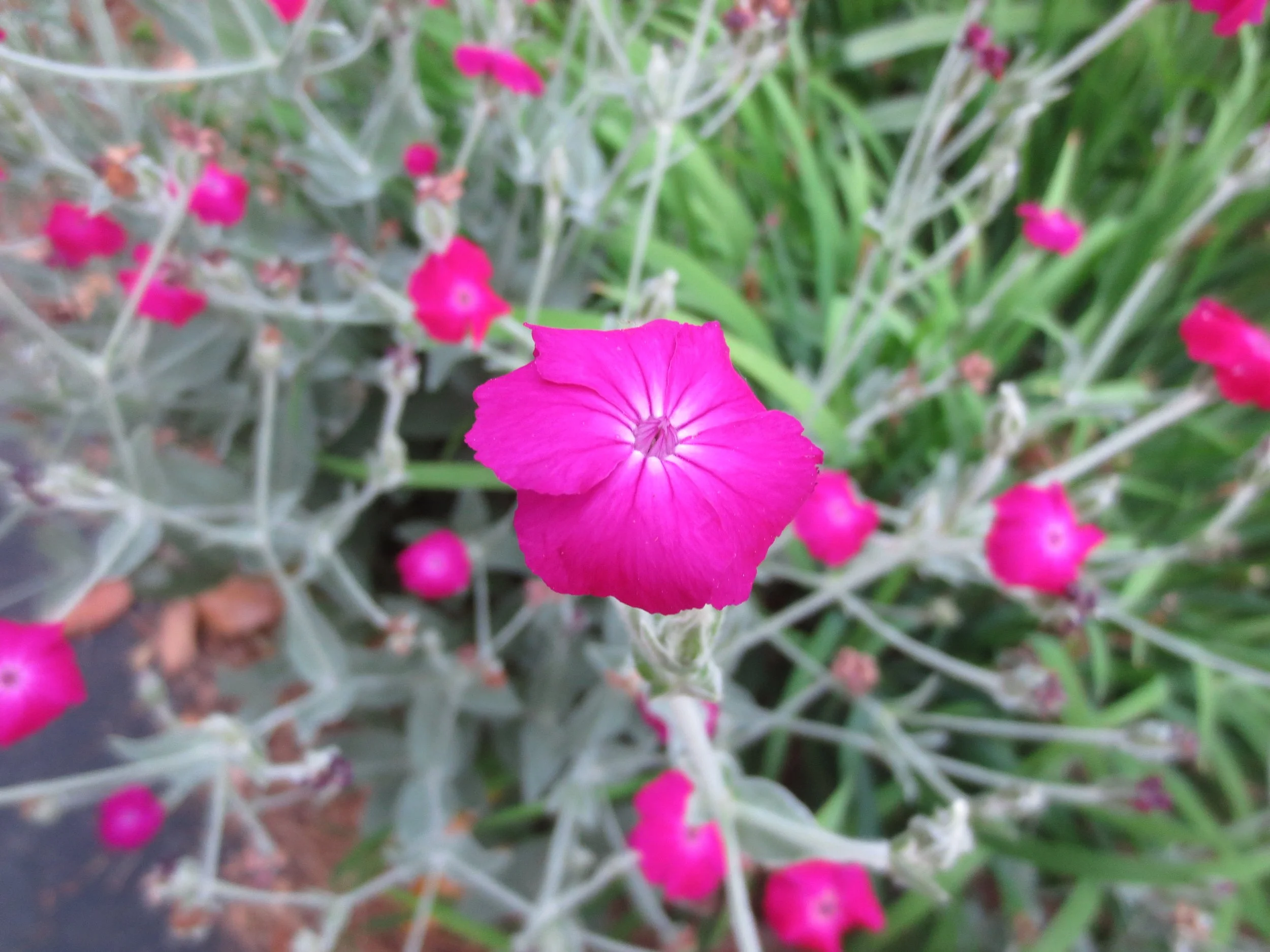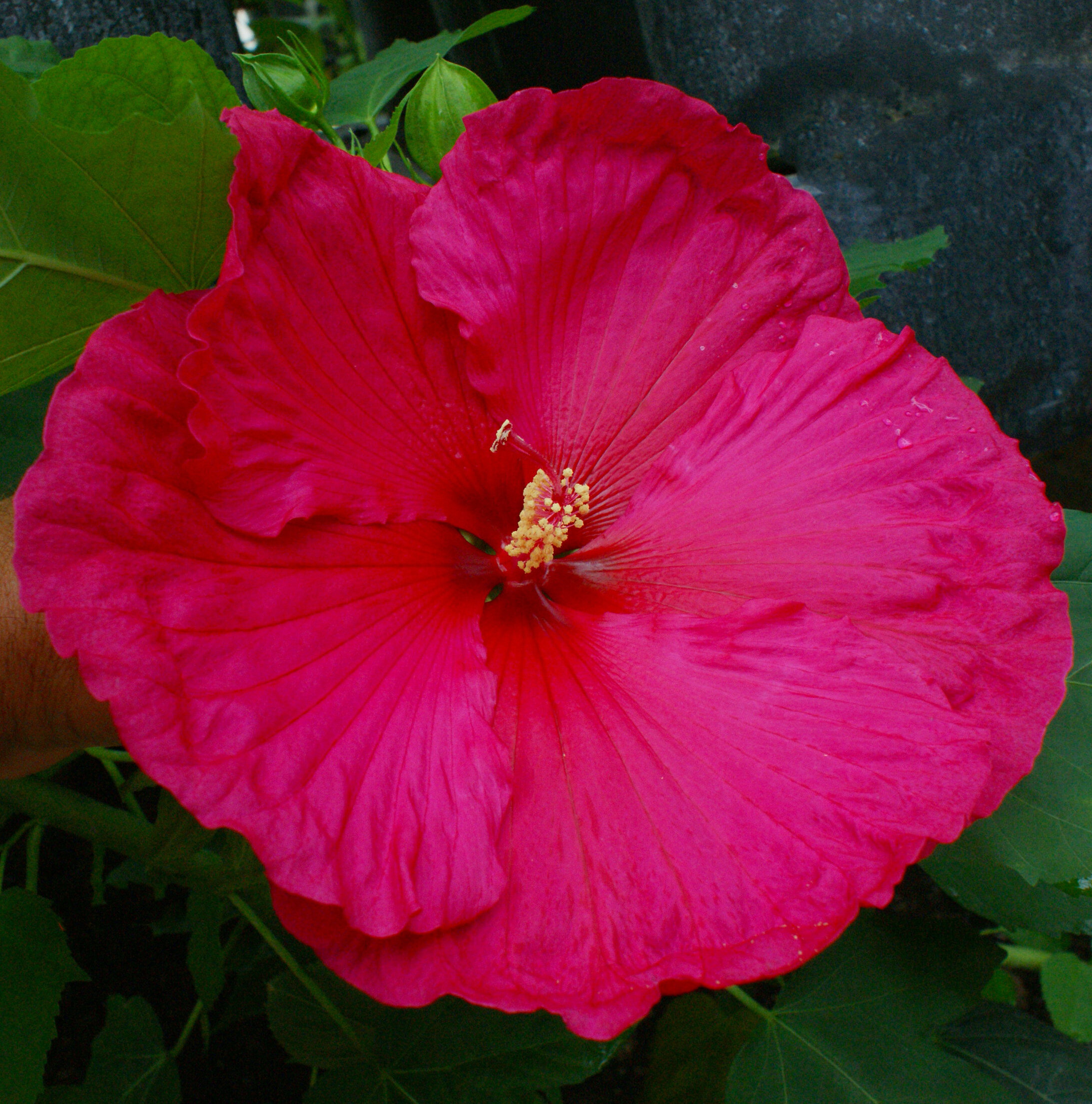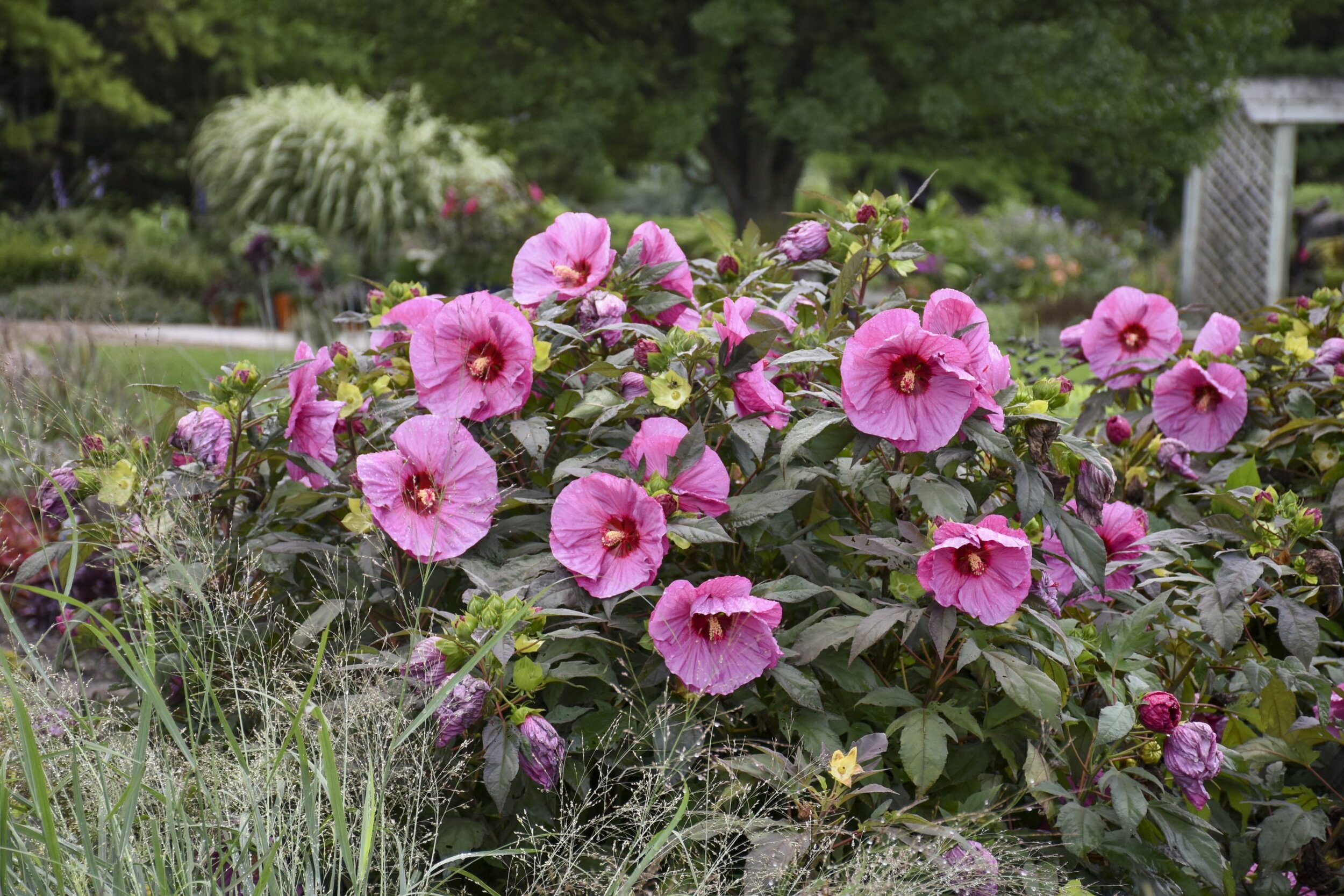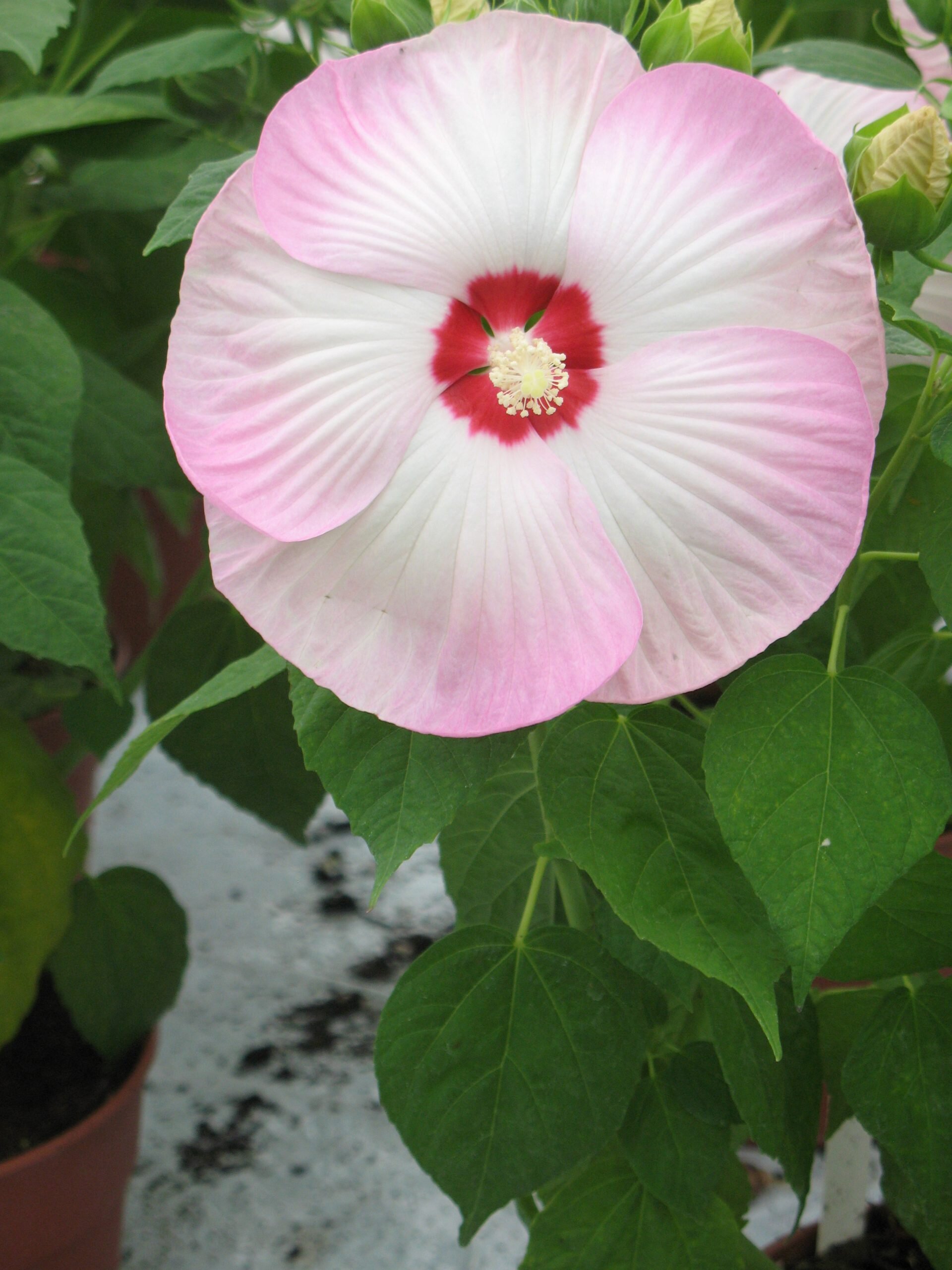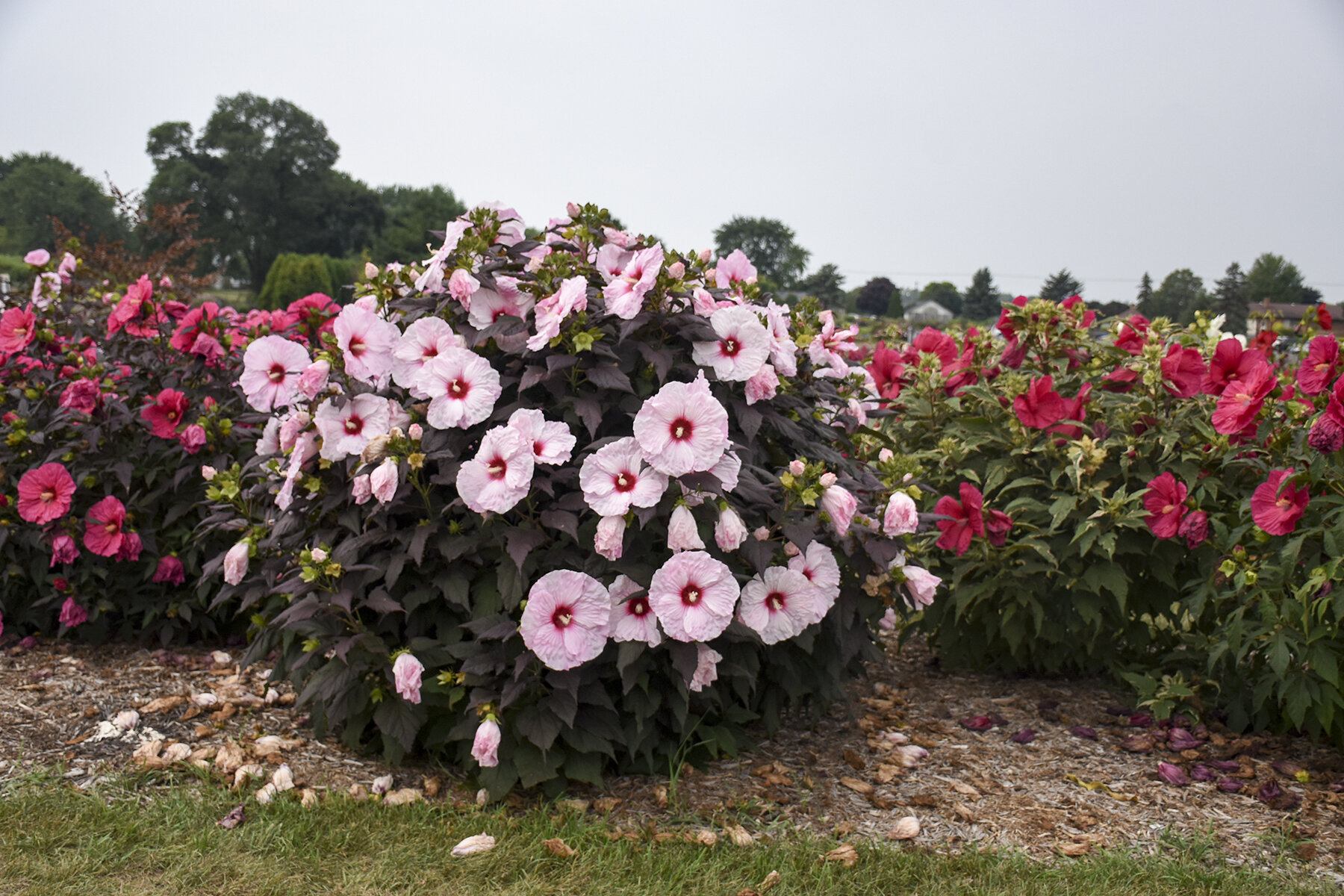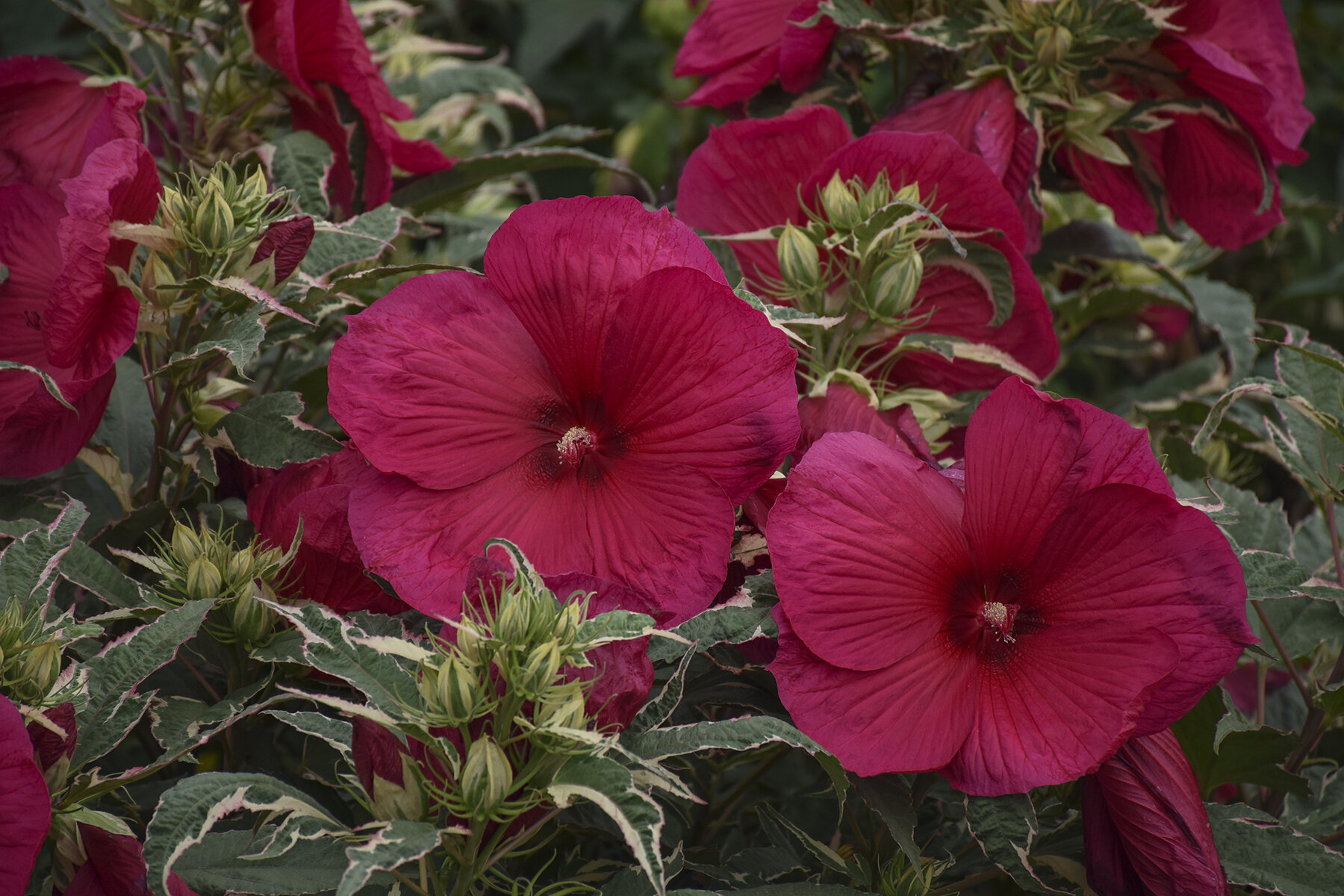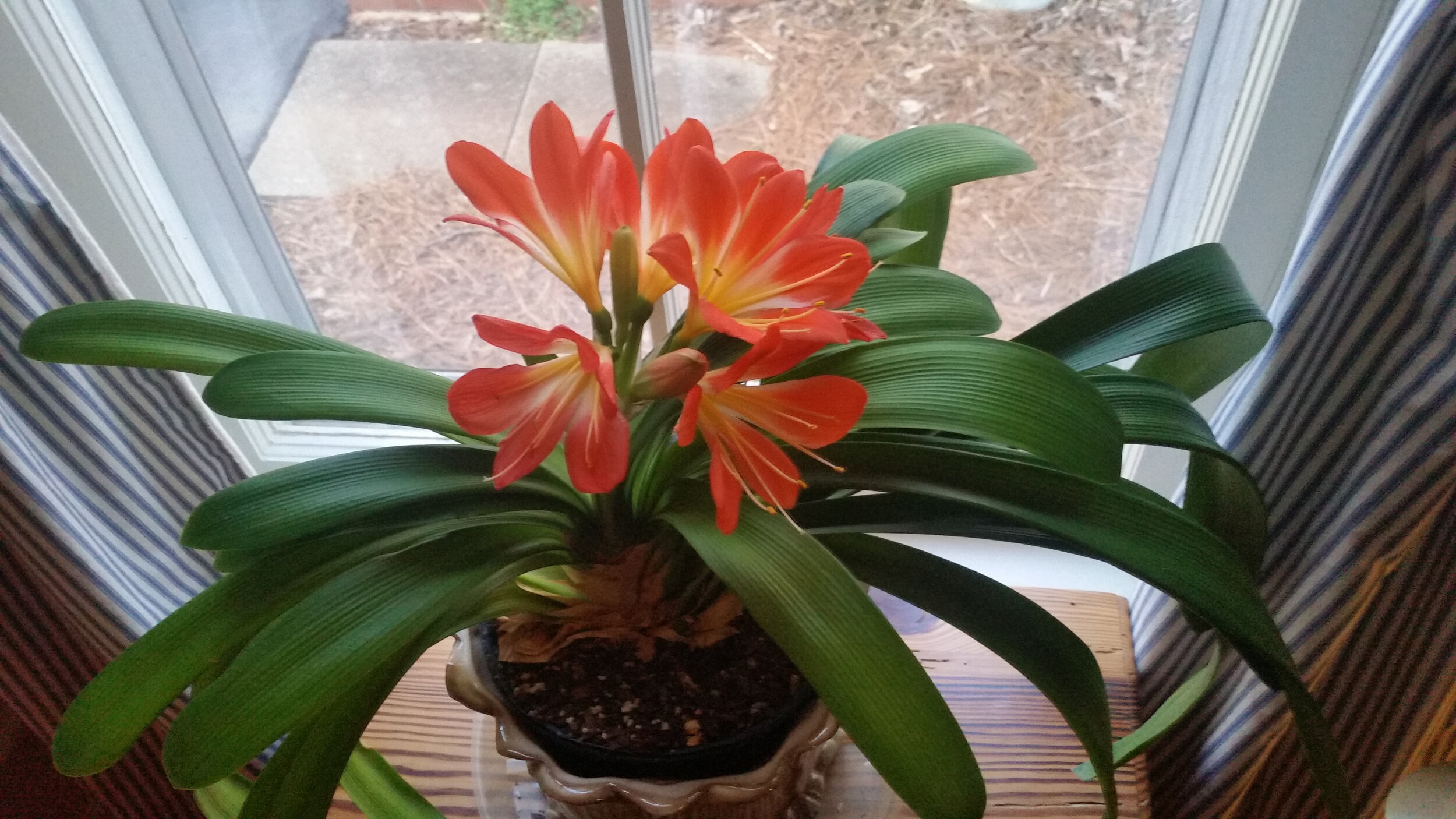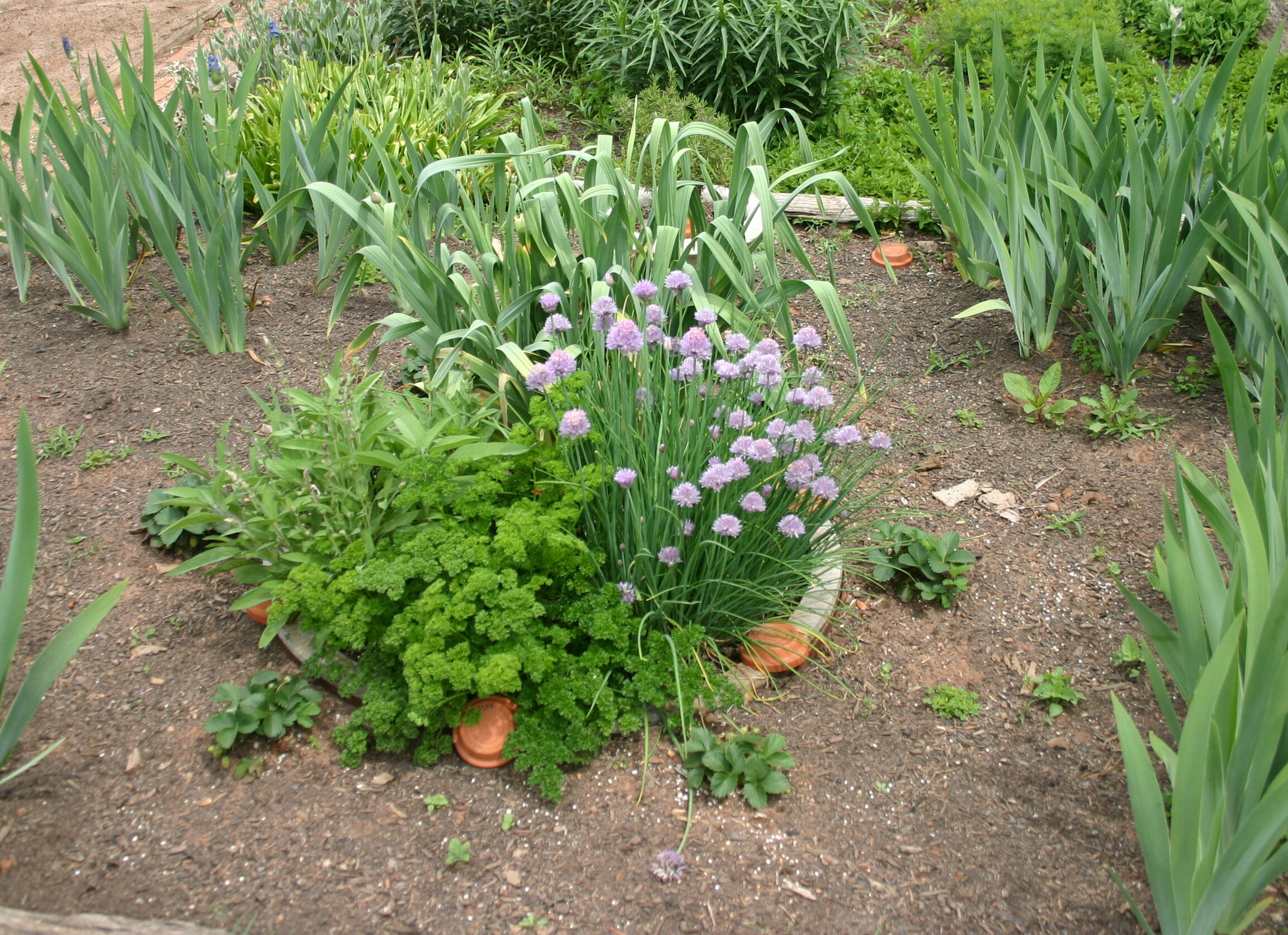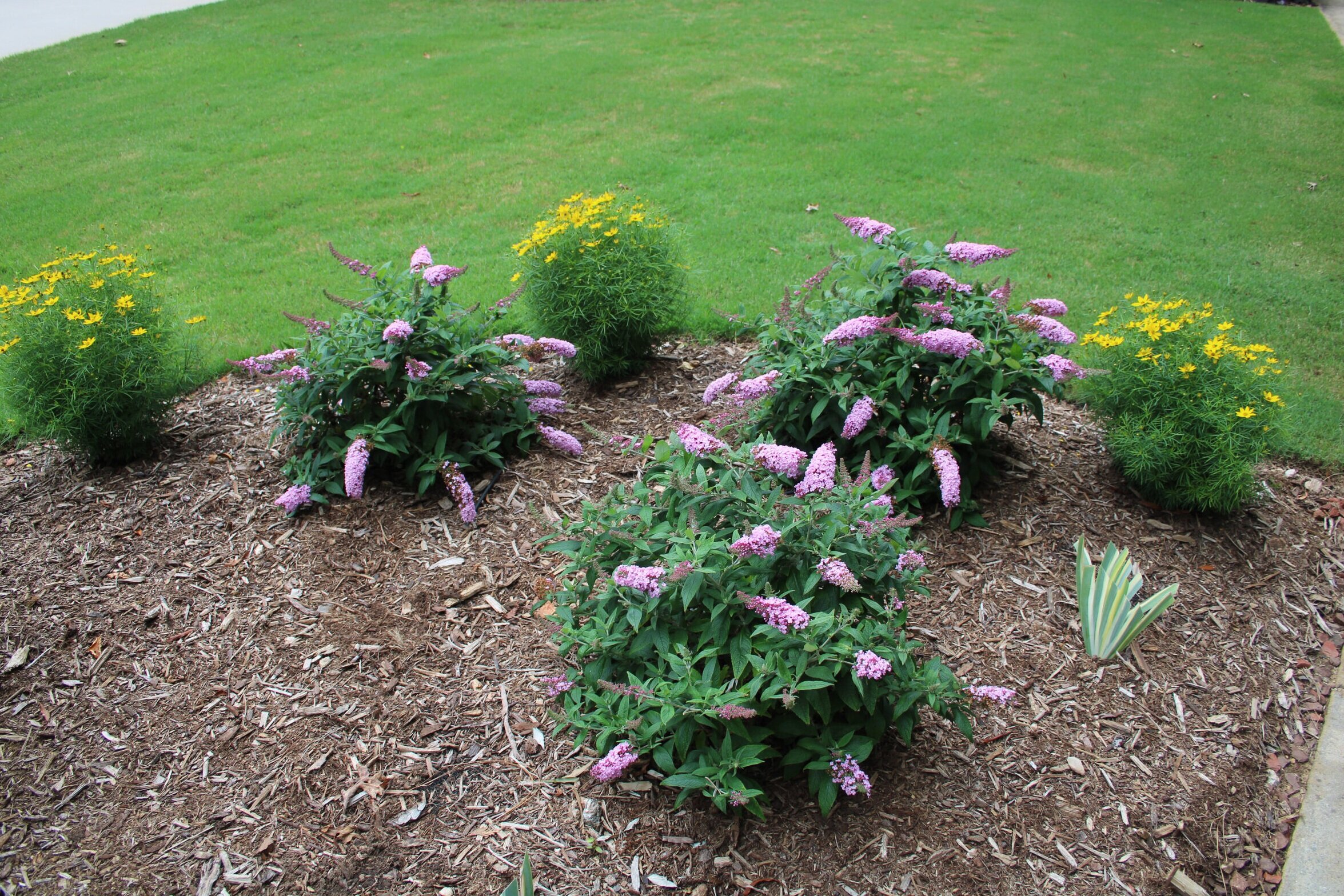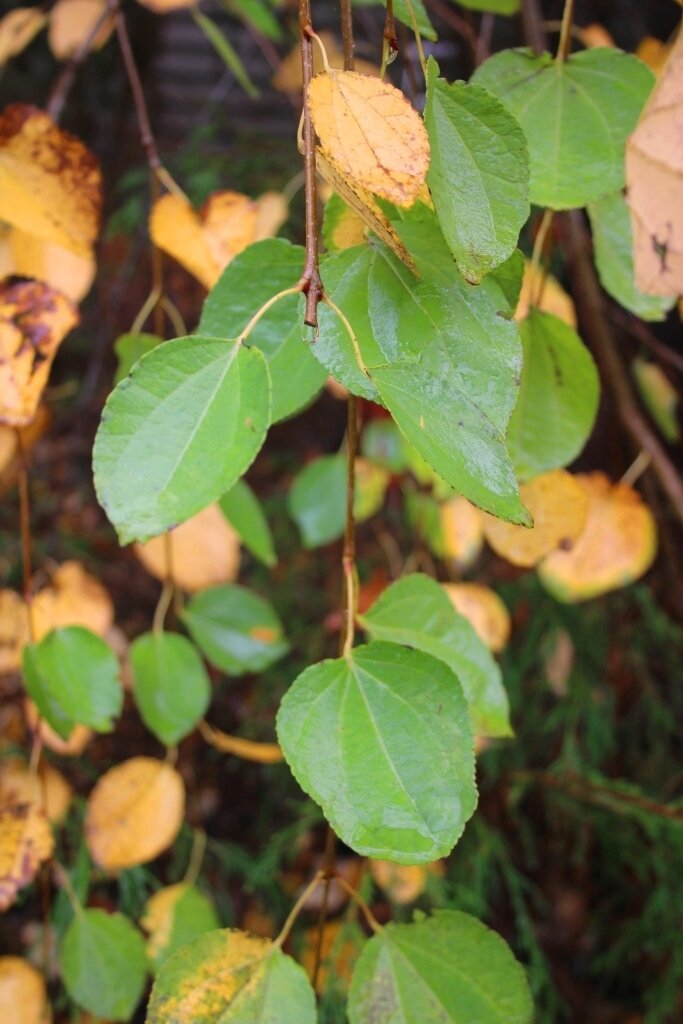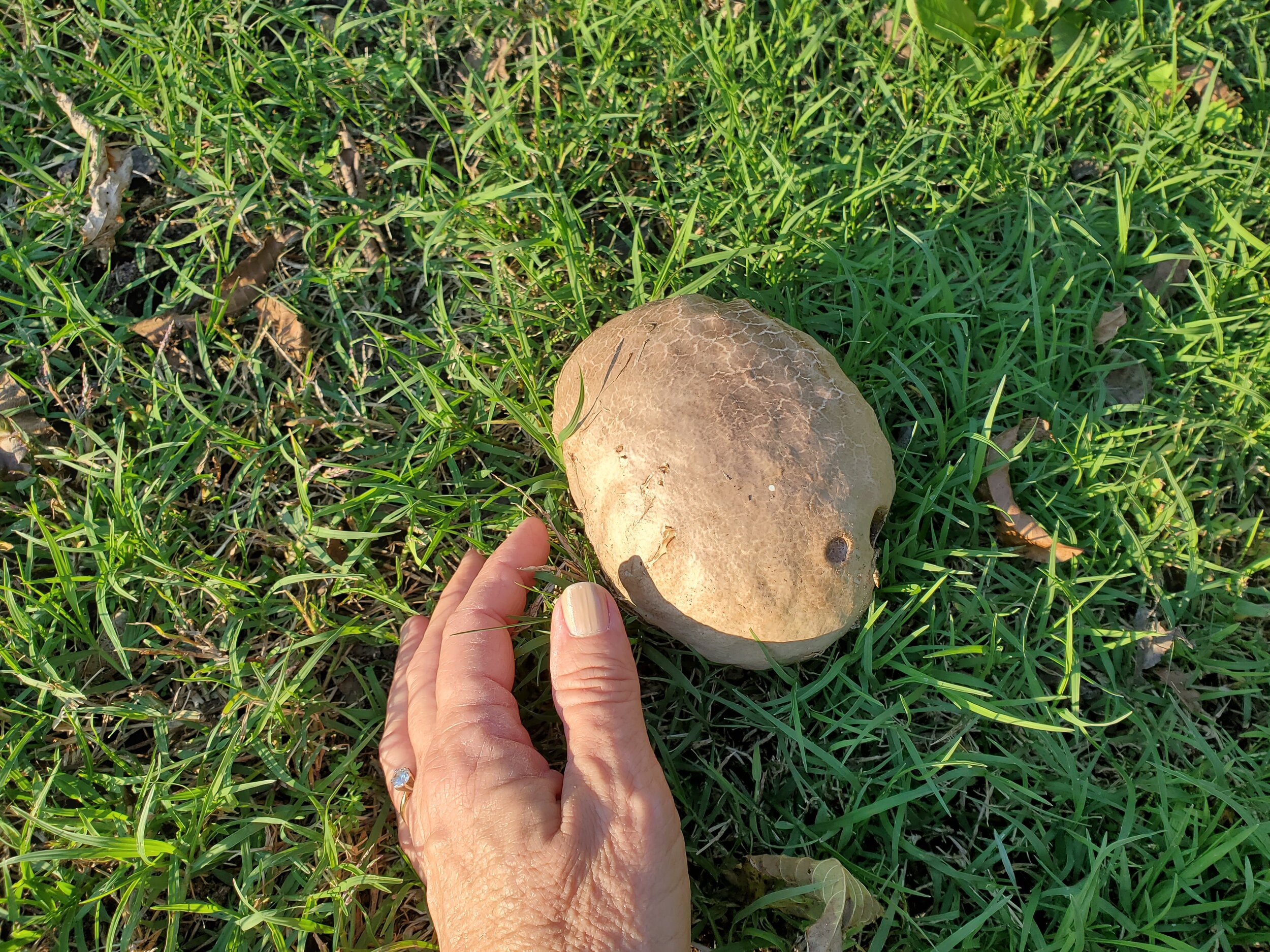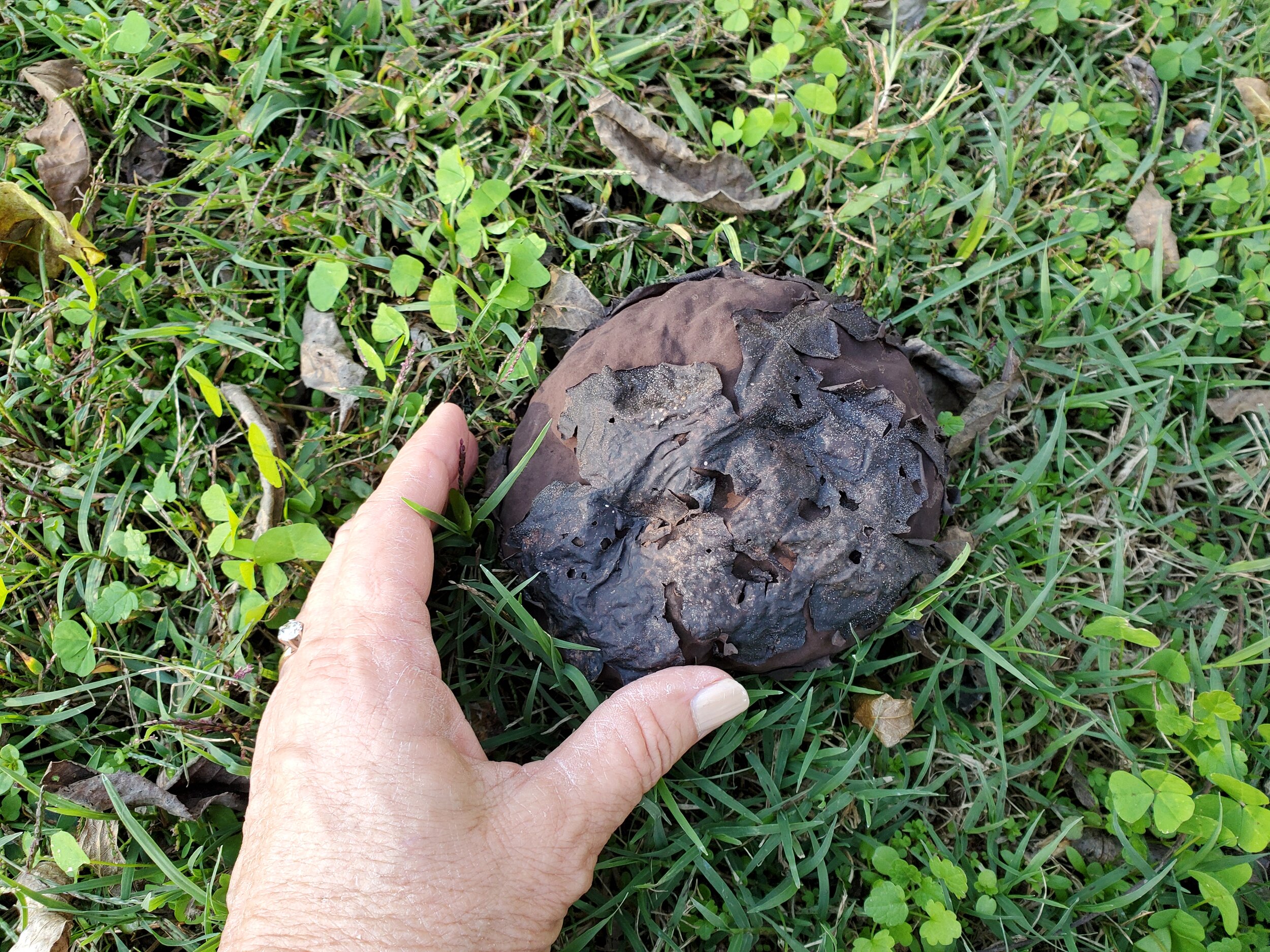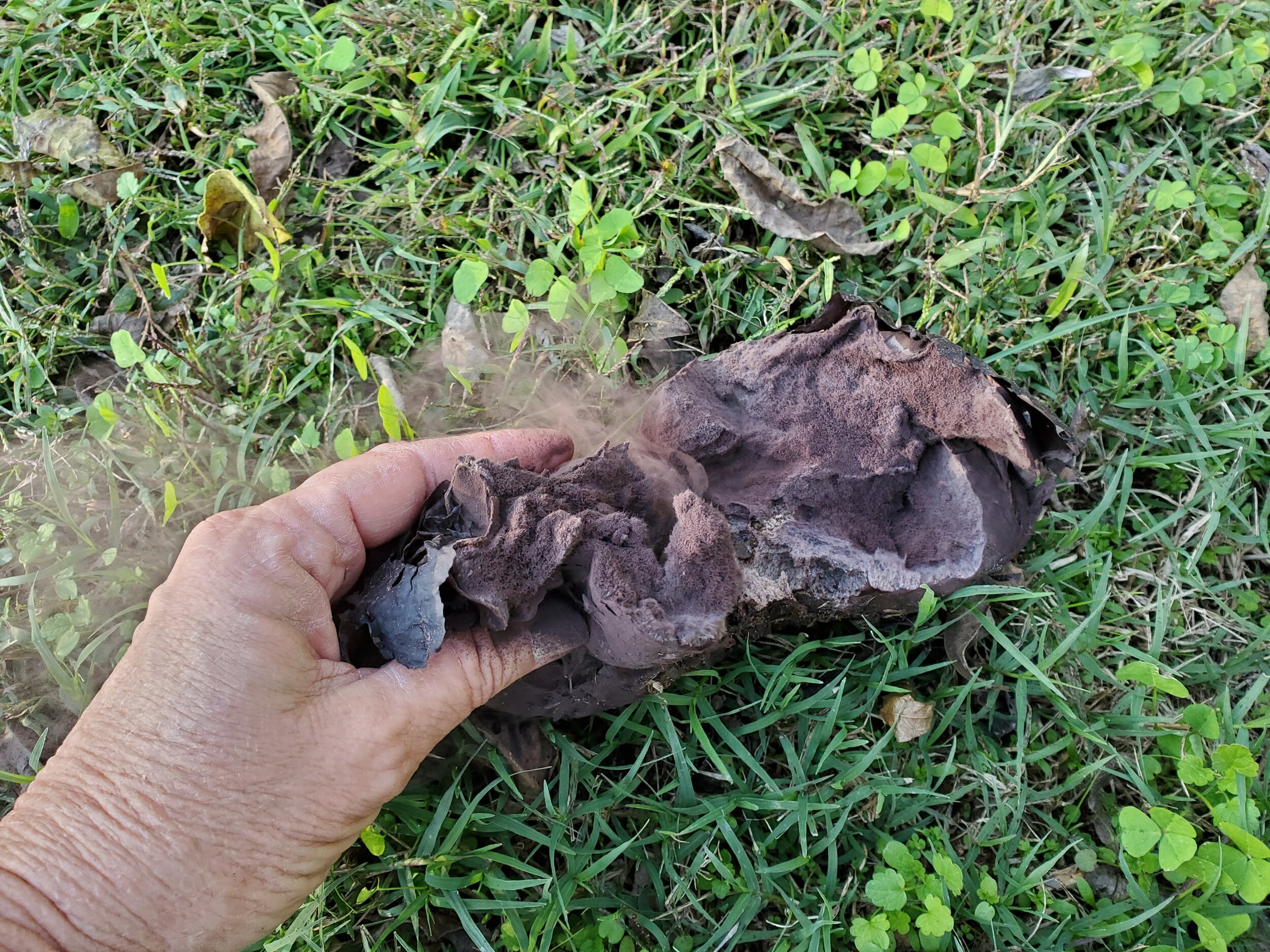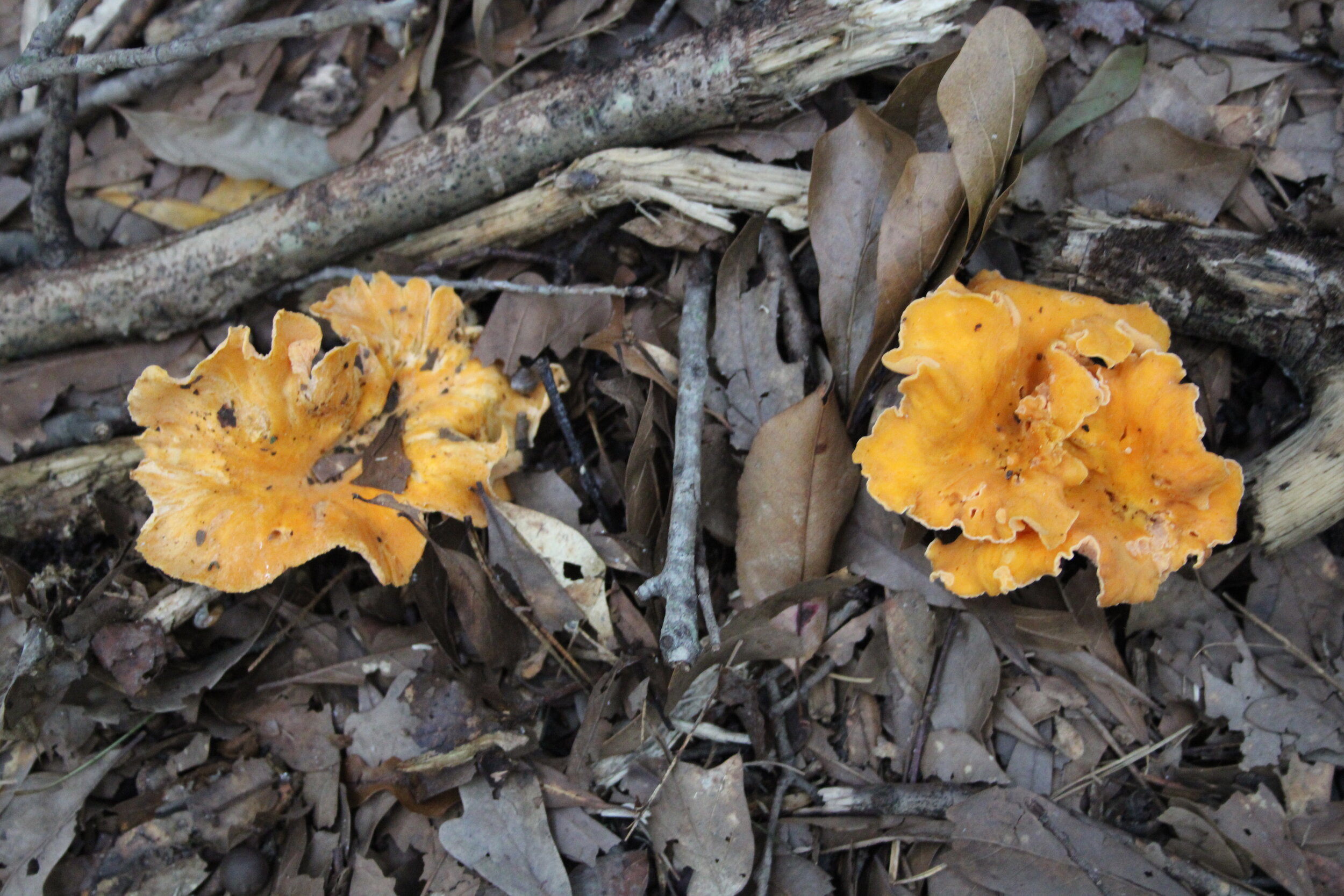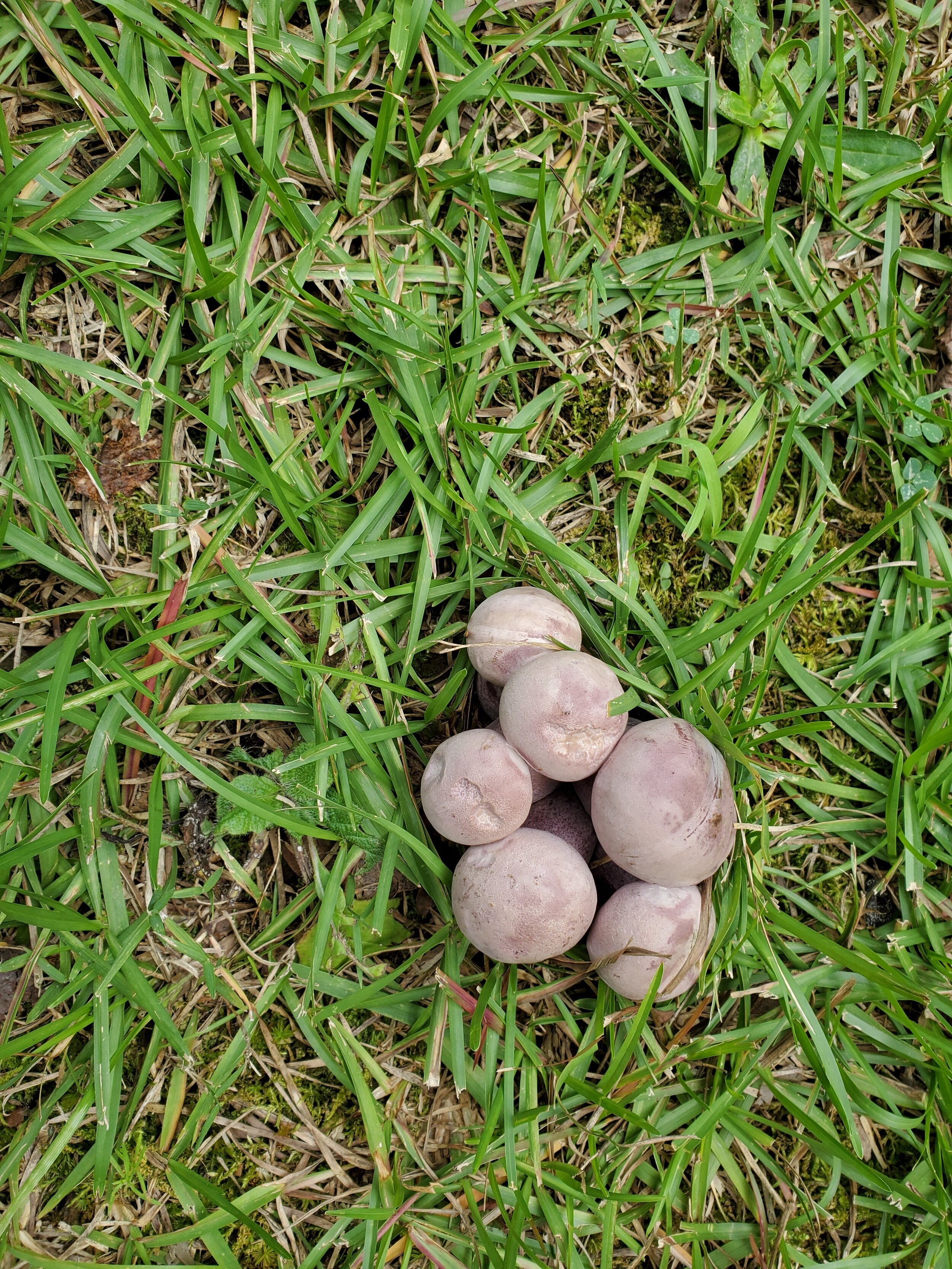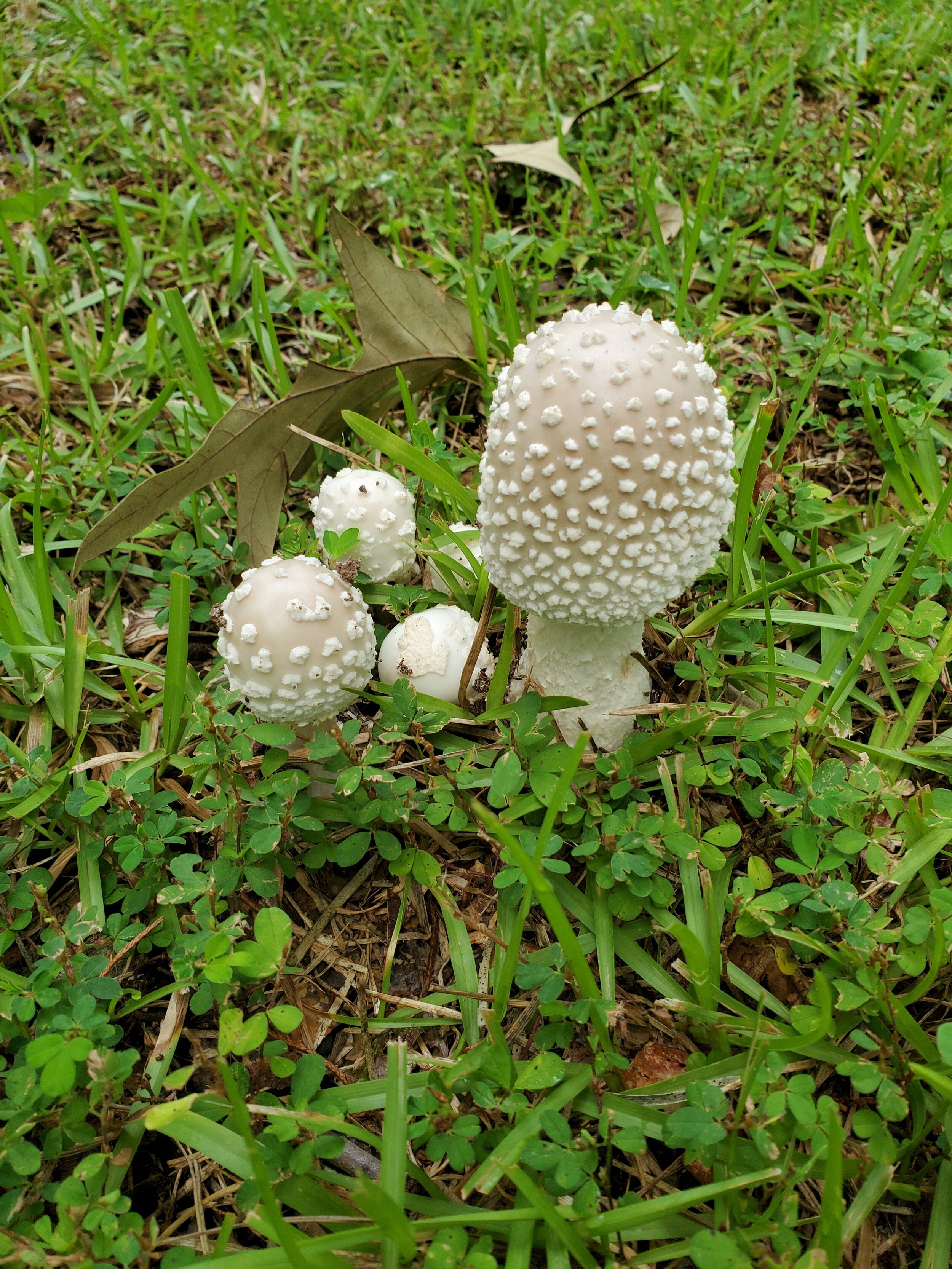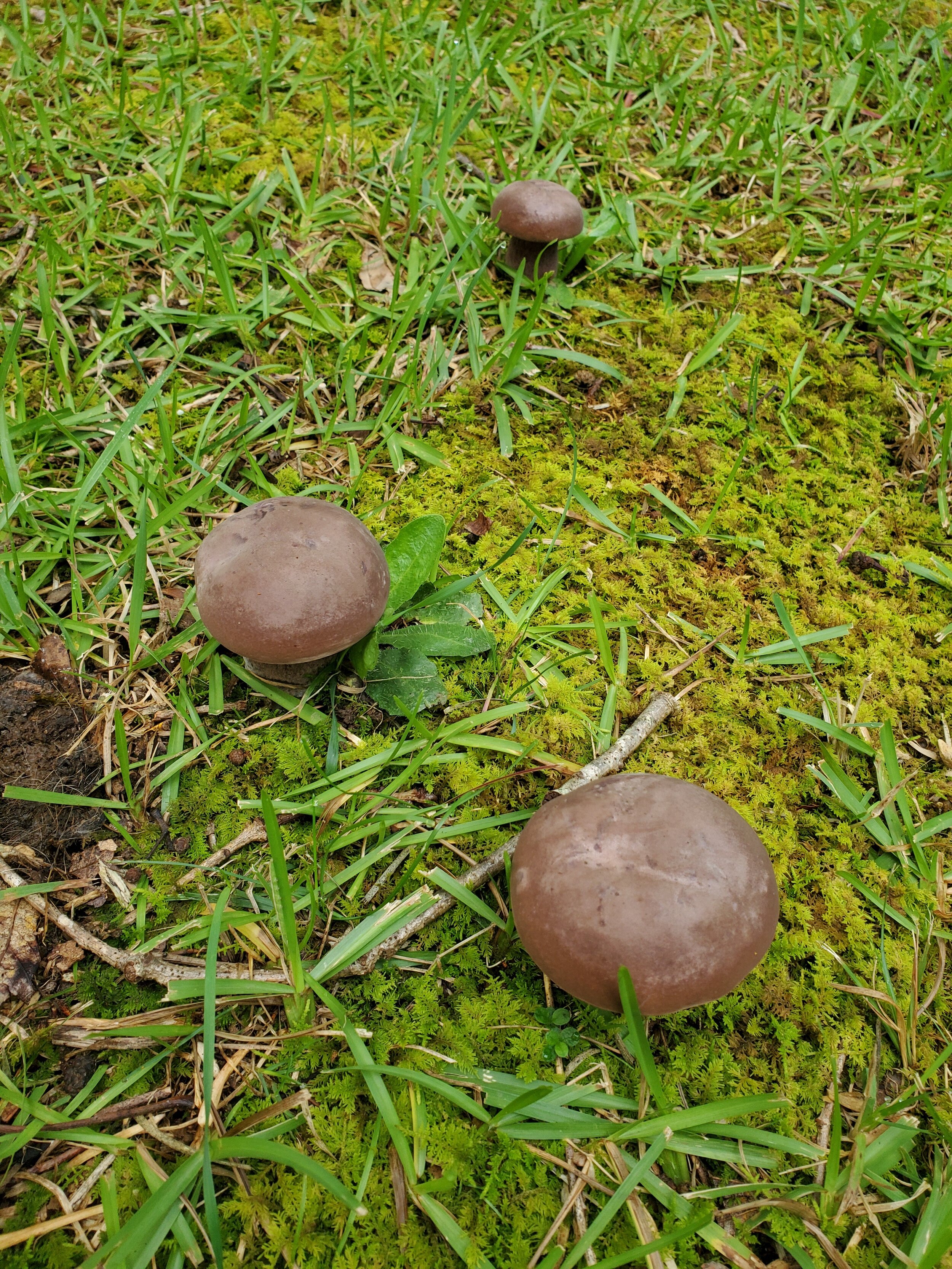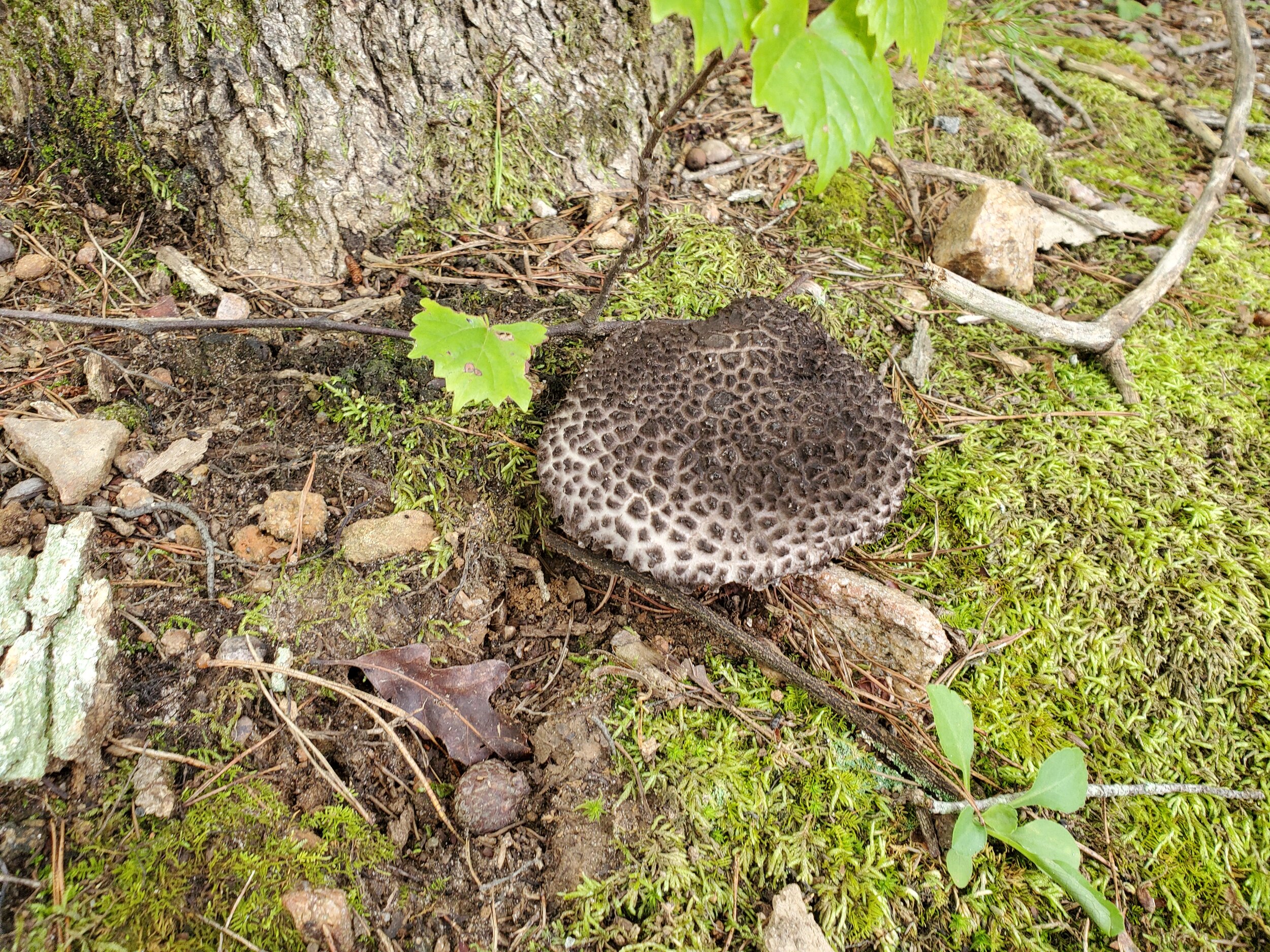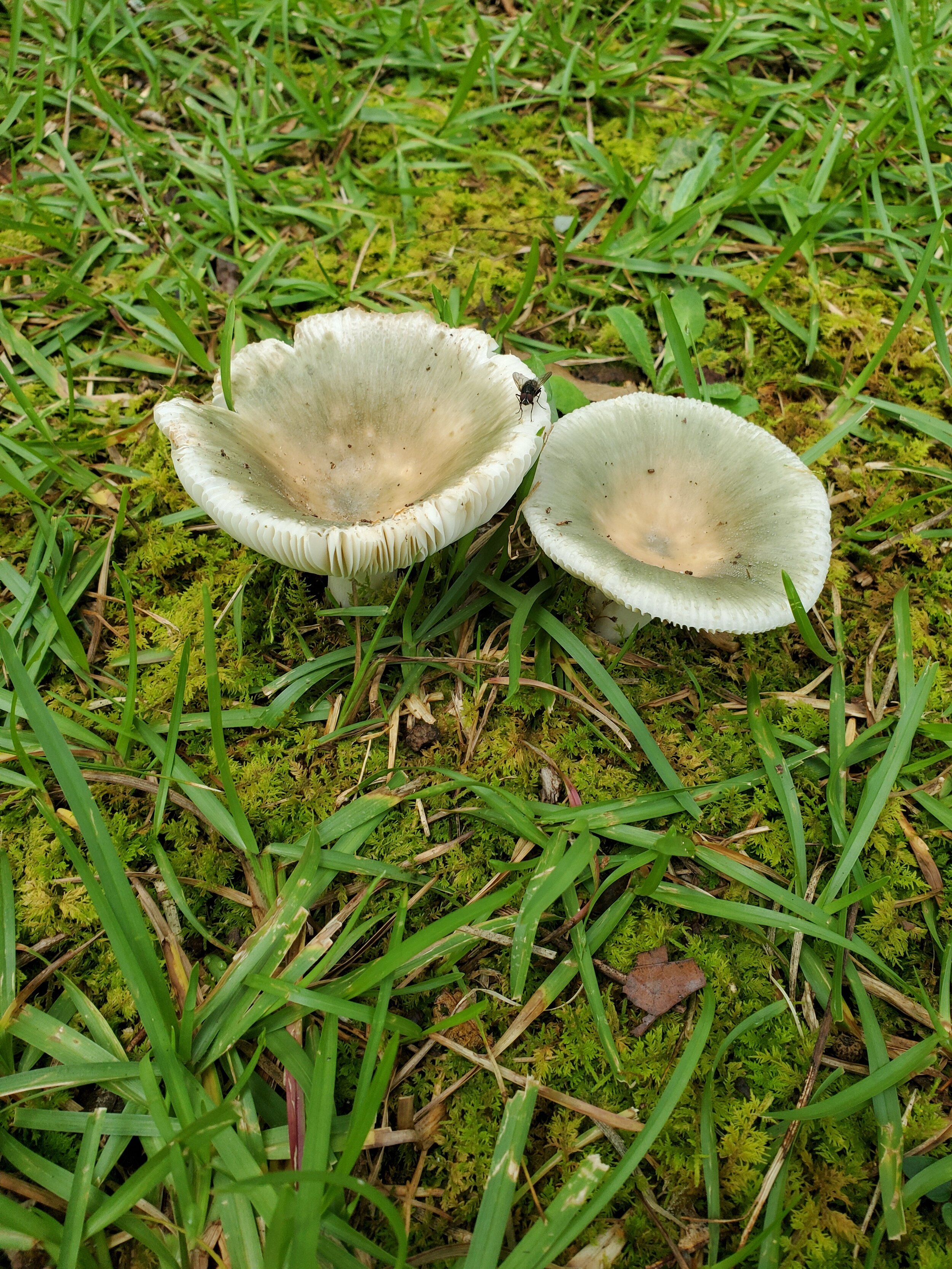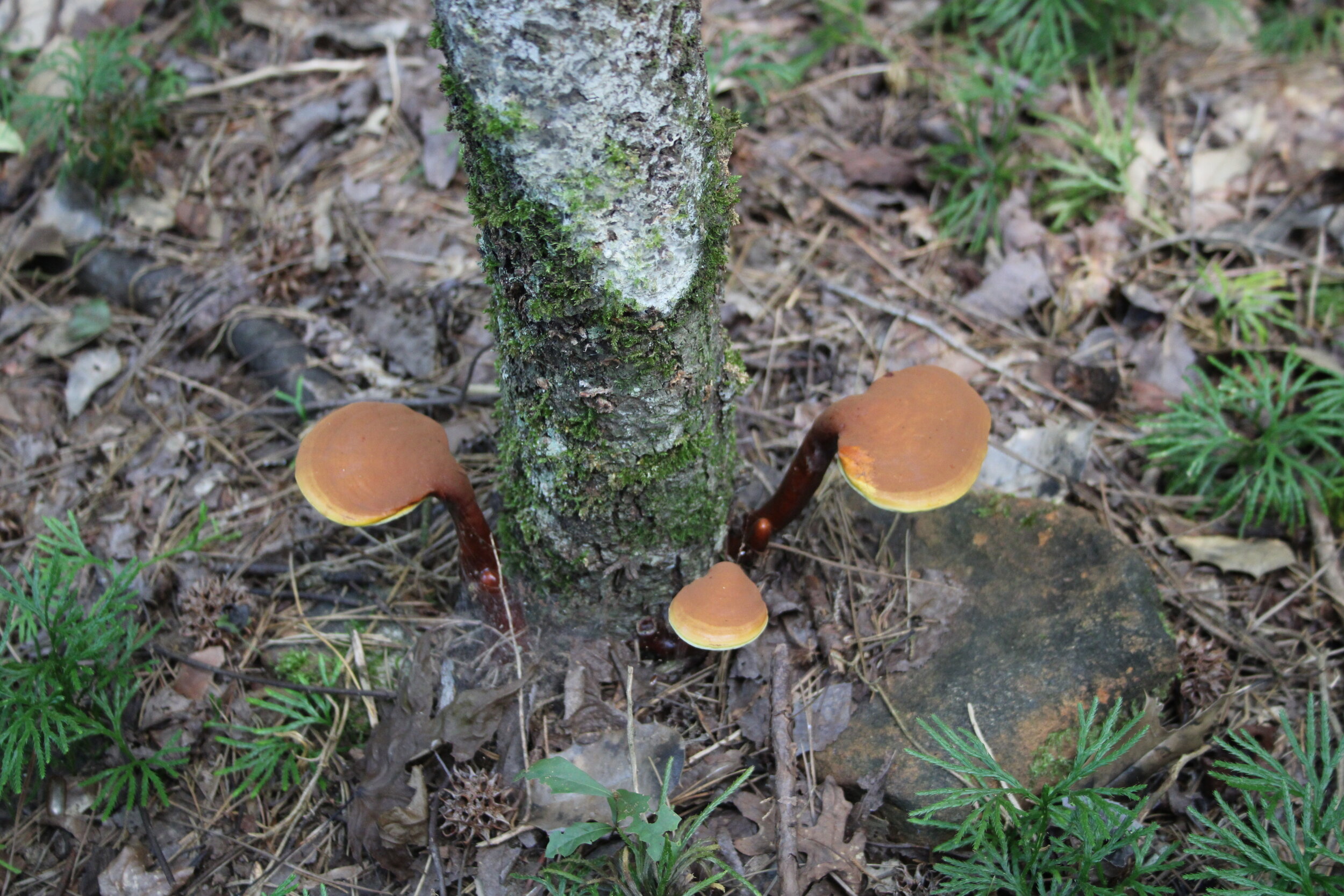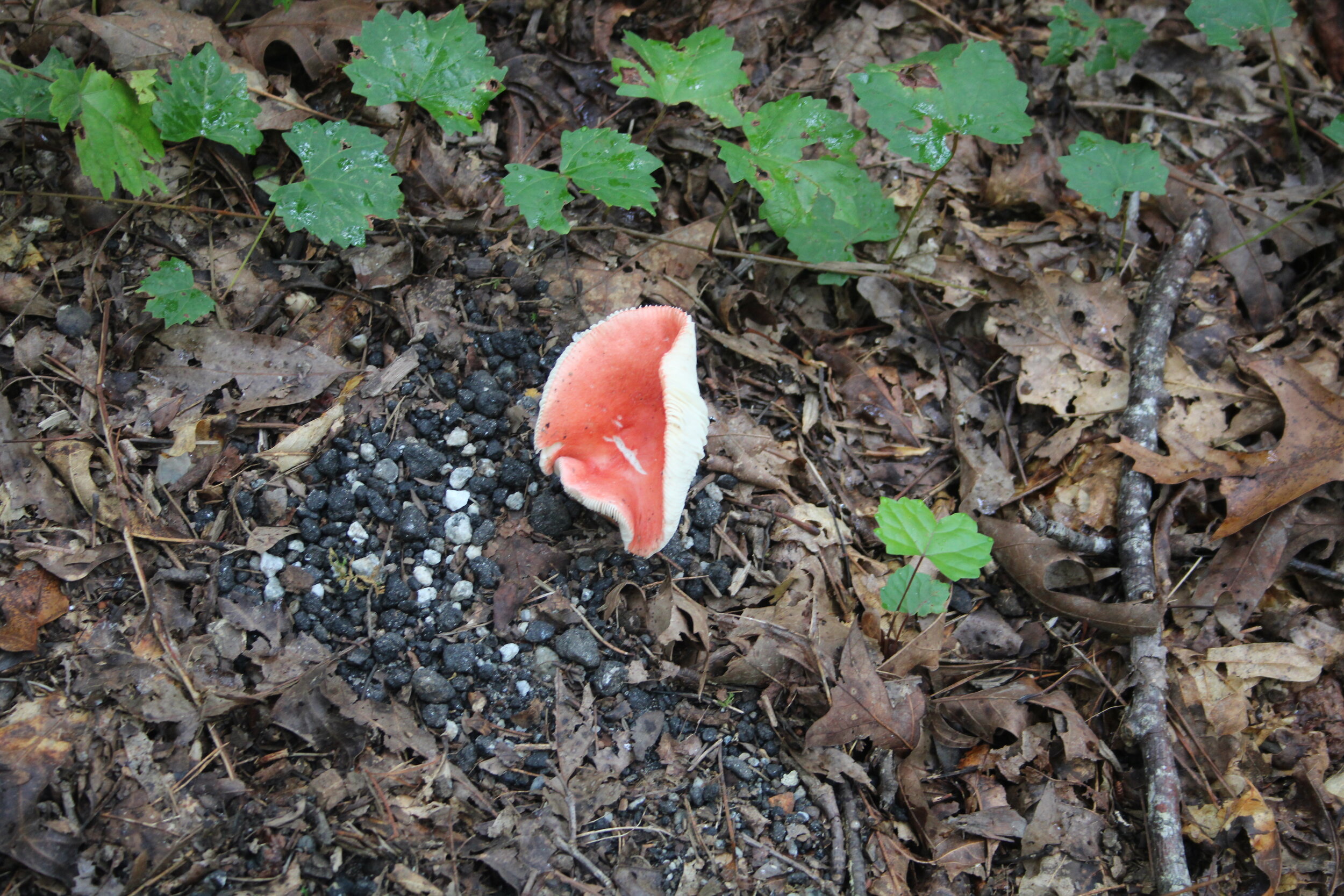Every year the National Garden Bureau selects one “Plant of The Year” in five separate categories: annual, perennial, edible, bulb, and shrub. The chosen plants in each category are selected because of their widespread adaptability and ease of culture. The 2021 Shrub Of The Year is Hardy Hibiscus.
Hibiscus is both the common name and the Latin genus name for several species. Hardy Hibiscus should not be confused with Tropical Hibiscus (H. rosa-sinensis) or Shrub Hibiscus, commonly known as Rose of Sharon (H. syriacus). Tropical Hibiscus makes a showy container plant but is not cold hardy in most of the US. Rose of Sharon is a gangly shrub growing to fifteen feet. In the Mary Snoddy garden, Rose of Sharon is almost indestructible. It survives and even thrives in poor soil, full sun or partial shade, drought, and all-around abuse. There are few plants I dislike (I’m looking at you, Pampas Grass) but despite its attractive flowers over a long bloom season, Rose of Sharon is not among my favorites. The foliage has an unpleasant (to my nose) odor and it lures aphids in disgusting numbers.
Hardy Hibiscus (Hibiscus moscheutos) is hardy down to zero degrees or even colder. Plants require full sun and plenty of moisture to look their best. They will even survive in areas that flood occasionally. Plants die to the ground each winter; in spring they grow rapidly to heights ranging from two to ten feet. The flowers can be as large as dinner plates – 10 to 12 inches in diameter – and come in pink, rose, red, purple, white, and bi-colors. Lady Baltimore is pink with a red eye. Lord Baltimore is a solid red. The Baltimores have been putting on a show in southern gardens for decades. A newer cultivar, ‘Midnight Marvel’ has true red flowers and wine foliage, a gorgeous combination. I have been observing hardy Hibiscus ‘Moy Grande’ in a local botanical garden for several years. The cherry pink blooms are huge and plentiful. Each year, the plant gets larger than it was the prior year. This cultivar was developed in San Antonio, Texas, where they know the meaning of “large.” ‘Disco Belle’ is a dwarf, reaching only thirty inches or so, but retaining the large flower size.
Choose your favorite color, site it in full sun and rich soil, give it plentiful water and get out of the way. These bold plants grow fast. They should be given plenty of room. Remove stems a few inches above ground level when they are top-killed by frost. New growth is a little late to emerge in the spring, which means they pair well with daffodils or other spring bulbs that put on a show and then go dormant. Flowers attract hummingbirds and butterflies. Leaves attract Japanese Beetles, so be prepared to do battle with those nasty bugs. A single plant functions as a specimen, but a row planting can work as a warm-weather hedge.
The accompanying photographs were kindly supplied by the National Garden Bureau. Click on the individual photos for a link with additional identifying information.
